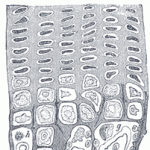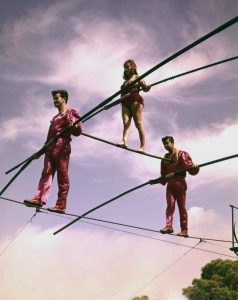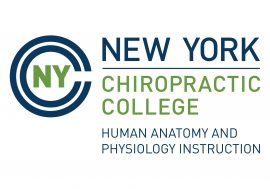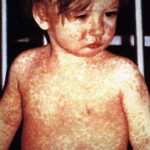 Pulse of Progress: Looking Back, Moving Forward | TAPP 147
Pulse of Progress: Looking Back, Moving Forward | TAPP 147
The A&P Professor
In Episode 147, host Kevin Patton reviews the highlights and events of the previous year in the world of The A&P Professor. He then turns to last year's predictions for teaching human anatomy and physiology to see if he was on the right track. Finally, predictions for the coming year are revealed. And lots of other stuff—this episode is two hours long, after all! 0:00:00 | Introduction 0:00:50 | Debrief: Topics, Stats, Reflections 0:21:28 | A Long, Long, Long Episode 0:23:05 | Debrief: More Reviewing & Reflecting 0:38:59 | Did I Get My Predictions Right? 0:50:22 | Textbook &...
info_outline Anatomy of Trust: Promoting Integrity in A&P Education | Winter Shorts | TAPP 146
Anatomy of Trust: Promoting Integrity in A&P Education | Winter Shorts | TAPP 146
The A&P Professor
Episode 146 of The A&P Professor podcast is one of our winter shorts, where I replay interesting segments from previous episodes. In this one, we discuss the importance of academic integrity in the Anatomy & Physiology course. We emphasize the need to incorporate discussions about integrity in the syllabus and course materials and share real-life examples of violations in the healthcare field. We highlight how dishonesty can have serious consequences and discuss strategies for prevention, such as using multiple test versions and unique topics for papers/projects. Providing examples of...
info_outline A Tongue Twister's Guide to Mastering Anatomy Pronunciation | Winter Shorts | TAPP 145
A Tongue Twister's Guide to Mastering Anatomy Pronunciation | Winter Shorts | TAPP 145
The A&P Professor
Episode 145 of The A&P Professor podcast is one of our winter shorts, where I replay interesting segments from previous episodes. In this one, you'll hear about the trials and tribulations of teaching and learning pronunciations of anatomy and physiology terminology. Including why the instructor is ALWAYS correct! 00:00 | Introduction 01:07 | Variations in Anatomy & Physiology Pronunciations 10:24 | Say Anatomy & Physiology Terms Out Loud 20:30 | Staying Connected ★ If you cannot see or activate the audio player, go to: 🏅 Apply for your credential (badge/certificate)...
info_outline Dissecting the Kenhub Atlas: Insights from Editor Mike Pascoe | TAPP 144
Dissecting the Kenhub Atlas: Insights from Editor Mike Pascoe | TAPP 144
The A&P Professor
Mike Pascoe joins host Kevin Patton in Episode 144 to chat about Mike's experience in editing the new Kenhub Atlas of Human Anatomy. We go behind the scenes to see how this new kind of anatomy atlas was developed. Let's see how those decisions get made and how the learning perspective gets incorporated into anatomy manuals. And we explore diverse representation in anatomy images and why we won't find any eponyms in this atlas. We also have a brief remembrance of our friend David Allard. 00:00 | Introduction 00:45 | Remembering David Allard 04:25 | Introducing Mike Pascoe 06:12 |...
info_outline The One Teaching Strategy That Will Fix Your Anatomy & Physiology Course | TAPP 143
The One Teaching Strategy That Will Fix Your Anatomy & Physiology Course | TAPP 143
The A&P Professor
In episode 143 of The A&P Professor podcast for anatomy and physiology faculty, host Kevin Patton uncovers the super-secret, single, ultimate teaching strategy you need to keep your course tuned up and effective. He also revisits the "out there" transducer model of the brain and suggests a connection with a recent discovery supporting quantum wave activity in brain cell microtubules. Yes, quantum waves in the microtubules. Kevin also clarifies and expands on those wacky "extra" courses he described in Episodes 140 and 141. 00:00 | Introduction 00:51 | Clarifying Kevin's Wacky Supplemental...
info_outline Muscle: A Gripping Story by Roy Meals | TAPP 142
Muscle: A Gripping Story by Roy Meals | TAPP 142
The A&P Professor
Get pumped up for Episode 142, where we have the honor of hosting Dr. Roy Meals, the musculoskeletal maestro! 💪 We're gonna flex our curiosity muscles and explore every nook and cranny of his latest masterpiece, Muscle: The Gripping Story of Strength and Movement. This episode's so dynamic, you might need a protein shake afterward! 0:00:00 | Introduction 0:01:13 | Re-Introducing Dr. Roy Meals 0:04:08 | Muscle Strain & Why We Train 0:13:53 | What Sword Swallowing Teaches Us About Muscle 0:24:49 | Muscle Stories: Learning Should Be Fun 0:38:48 | Staying Connected...
info_outline Study Courses Supercharge Anatomy & Physiology Success | TAPP 141
Study Courses Supercharge Anatomy & Physiology Success | TAPP 141
The A&P Professor
Get ready for a mind-bending 😲 rendezvous with Kevin Patton in Episode 141, where he continues to spill the beans on his top-secret recipe for student triumph. 🏆 Brace yourself for this next adventure on his whirlwind tour of revolutionizing A&P 1 education, as we dissect the art of identifying student pain points, personalizing preparation, and serving up the kind of mentorship they've been yearning for! 0:00:00 | Introduction 0:00:45 | One of Two Success Courses 0:09:48 | Setting Up the Supplement Course 0:18:44 | Structure of Class Sessions 0:40:17 |...
info_outline Pre-A&P: A Refresher for Student Success in Anatomy & Physiology | TAPP 140
Pre-A&P: A Refresher for Student Success in Anatomy & Physiology | TAPP 140
The A&P Professor
In episode 140, we introduce the development of the pre-A&P course and the A&P1 Supplement course. These courses address the challenges faced by A&P students and improve their readiness and comprehension. In this first of two episodes, we focus on the pre-A&P course. It focuses on filling subject knowledge gaps with 10 modules and cumulative tests. Student surveys and studies show its effectiveness in achieving higher grades in the A&P 1 course. Implementing these nontraditional courses requires collaboration and support from advisors and faculty members. Together, we...
info_outline Thinking New Thoughts about the Human Brain | TAPP 139
Thinking New Thoughts about the Human Brain | TAPP 139
The A&P Professor
In Episode 139, we explore a new discovery in nerve signaling in the brain called a dendritic action potential (dCaAP), we look at a whacky proposed model of brain function, and we share some ideas about how we can help our students understand the core concepts of chemical signaling and signal transduction in different contexts. Put on your thinking caps and jump into this fresh episode now. 00:00 | Introduction 00:50 | Dendritic Action Potentials 12:16 | Transducer Model of the Brain 21:43 | Chemical Signals & Signal Transduction 35:09 | Staying Connected ★ If you cannot see or...
info_outline Dancing Organelles, AI Resources, Distracting Animations, Timed Tests & Micro-credentials | TAPP 138
Dancing Organelles, AI Resources, Distracting Animations, Timed Tests & Micro-credentials | TAPP 138
The A&P Professor
In Episode 138 of The A&P Professor podcast for anatomy & physiology faculty, host Kevin Patton discusses some new thinking about organelle function, why decorative animations are not a good idea in our teaching slides, news about Wendy Riggs and the 2023 HAPS President's Medal, why I don't like timed tests, resources for AI in the curriculum, and why micro-credentials are our friends. With all that, how is that we left out any mention of carbaminohemoglobin? 00:00 | Introduction 00:50 | Wendy Riggs Wins Big 04:173 | Curricular Resources for AI 08:55 | Timed Online Tests 24:12 |...
info_outlineHost Kevin Patton outlines the analogy of a high-wire walker as a model for homeostasis. Plus an update in how bones grow in length and how the measles virus causes immune amnesia.
00:44 | Measles & Immune Amnesia
09:16 | Sponsored by HAPS
09:44 | Bone Growth Update
13:55 | Sponsored by AAA
14:27 | Featured: The Wallenda Model of Homeostasis
40:43 | Sponsored by HAPI Online Graduate Program
41:32 | Hearing from YOU
If you cannot see or activate the audio player click here.
Questions & Feedback: 1-833-LION-DEN (1-833-546-6336)
Follow The A&P Professor on Twitter, Facebook, Blogger, Nuzzel, Tumblr, or Instagram!
After nourishment, shelter, and companionship, stories are the thing we need most in the world. (Philip Pullman)
1 | Measles and Immune Amnesia
8.5 minutes
Measles (MV) is very contagious and can be deadly, even though some cases are mild to moderate. However, it can also "erase" some or all of our immune memory!
- Measles and Immune Amnesia (article from American Society for Microbiology) my-ap.us/2F0Chew
- Watch: The tricks that make measles so infectious (video you can use in your class) my-ap.us/2EWugar
- Notes
- In this segment, the necessary step of memory cells producing effector cells (that engage pathogens) in subsequent exposures to the "remembered" pathogen is glossed over for simplicity of discussion.
- Presumably, the "live" attenuated MV used in vaccination triggers formation of memory cells against MV without causing the full-blown infection that impairs immune memory of other pathogens.
2 | Sponsored by HAPS
0.5 minutes
The Human Anatomy & Physiology Society (HAPS) is a sponsor of this podcast. You can help appreciate their support by clicking the link below and checking out the many resources and benefits found there. AND mention your appreciation to the HAPS leadership while you are at the conference—or anytime that you communicate with them.
3 | Bone Growth Update
4 minutes
How we understand growth of a long bone at the epiphyseal plate may be changing a bit. Check out the audio and the links below to find out more.
- New mechanism of bone growth discovered (summary article) my-ap.us/2EYEdEc
- A radical switch in clonality reveals a stem cell niche in the epiphyseal growth plate. (journal article in Nature) my-ap.us/2F2cwKy

4 | Sponsored by AAA
0.5 minute
The searchable transcript for this episode, as well as the captioned audiogram of this episode, are sponsored by The American Association of Anatomists (AAA) at anatomy.org. Their big meeting is in April at the Experimental Biology (EB) meeting in Orlando FL. Check it out!

5 | The Wallenda Model of Homeostasis
26 minutes
Multiple models of homeostasis may be needed for students to fully understand the important core concept of homeostasis. Here, Kevin describes an analogy he uses—a person on a highwire. Listen to why he calls this model The Wallenda Model and find out how he uses it to better understand homeostasis.
-
- The Wallendas are a family of highwire artists famous for very high/long "sky walks" and human pyramids on the wire
- Karl Wallenda, the most famous of the clan, died from a fall off the wire during a sky walk
- The famous 7-person pyramid was also marred by a tragic fall
- NOTE: The balance pole is normally up to about 30 pounds or so. The 80-pound figure given in this episode would be unusually heavy.
- Elements of The Wallenda Model
- Variable: position of body
- Set point: directly over the wire
- Sensors: nerve receptors (eyes, inner ears, muscle stretch receptors, etc.)
- Integrator: brain
- Effectors: skeletal muscles
- Where to send students:
- lionden.com/homeostasis.htm
- A summary of all three models Kevin uses to teach homeostasis
- Includes photos and links to videos
- Survival Guide for Anatomy & Physiology
- lionden.com/tips-survival-guide.htm
- Includes a short, illustrated summary of The Wallenda Model of Homeostasis
- lionden.com/homeostasis.htm
- The Wallendas are a family of highwire artists famous for very high/long "sky walks" and human pyramids on the wire

6 | Sponsored by HAPI Online Graduate Program
0.5 minute
The Master of Science in Human Anatomy & Physiology Instruction—the MS-HAPI—is graduate program for A&P teachers. A combination of science courses (enough to qualify you to teach at the college level) and courses in instructional practice, this program helps you power up your teaching. Kevin Patton is a faculty member in this program. Check it out!

If the hyperlinks here are not active, go to TAPPradio.org to find the episode page.
- More details at the episode page.
- Transcript available at the script page.
- Listen to any episode on your Alexa device.
- Need help accessing resources locked behind a paywall? Check out this advice from Episode 32 to get what you need! https://youtu.be/JU_l76JGwVw?t=440


